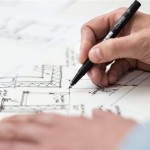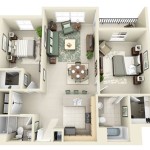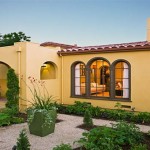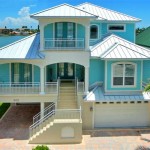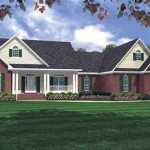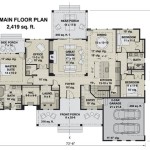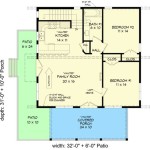House Plans With Interior Pool: A Comprehensive Guide
Integrating an interior pool into a residential design represents a significant undertaking, requiring careful planning and consideration of numerous factors. House plans featuring interior pools differ substantially from standard designs, impacting structural integrity, climate control, ventilation, and overall energy efficiency. This article provides a comprehensive overview of the essential aspects involved in developing house plans incorporating interior pools.
The inclusion of an indoor pool dramatically alters the environment within the home. Increased humidity, potential for condensation, and the presence of chlorine or other pool chemicals necessitate specialized engineering solutions to mitigate potential problems. Successfully integrating an indoor pool requires a holistic approach, considering not only the aesthetic appeal but also the long-term implications for the building's structure and the health and comfort of its occupants.
Structural Considerations and Design Implications
The structural engineering aspects of incorporating an interior pool are paramount. The weight of the water, the dimensions of the pool, and the type of construction materials used directly influence the building's foundation and supporting framework. Initial site surveys and soil analyses are crucial to determine the suitability of the land for this type of construction. This is especially critical if the pool is planned for an upper level of the house, as the structural design must accommodate the added load of thousands of gallons of water.
House plans need to account for the pool's dimensions and shape, which will affect the layout of the surrounding rooms. Ample space must be allocated around the pool for circulation, lounging areas, and maintenance access. The pool's depth is another critical factor, influencing the overall design as well as safety considerations. Deeper pools will require more robust structural support and may also necessitate specific safety features such as railings or alarms.
The choice of construction materials for the pool itself is vital. Concrete, fiberglass, and vinyl liners are common options, each with its own advantages and disadvantages in terms of cost, durability, and maintenance requirements. The pool's shell must be waterproofed effectively to prevent leaks, which can damage the surrounding structure and contribute to mold growth. Proper drainage systems must be implemented to manage water overflow and prevent water from seeping into the surrounding areas.
Furthermore, the design must consider the integration of mechanical and electrical systems. This includes plumbing for filling, draining, and circulating the water, as well as electrical wiring for pool lighting, pumps, and heating systems. Compliance with local building codes and regulations is essential, and inspections are typically required at various stages of construction to ensure safety and structural integrity.
Climate Control, Ventilation, and Humidity Management
Maintaining a comfortable and healthy indoor environment in a house with an interior pool requires careful attention to climate control, ventilation, and humidity management. The high evaporation rate of water from the pool can lead to excessive humidity, which can contribute to mold growth, structural damage, and discomfort for occupants. Effective ventilation systems are crucial to remove moisture-laden air and introduce fresh air into the pool area.
Dedicated dehumidification systems are often necessary to control humidity levels. These systems work by extracting moisture from the air and condensing it into water, which is then drained away. The size and capacity of the dehumidifier should be determined based on the pool's surface area, water temperature, and the building's overall climate.
Heating the pool water and the surrounding air is essential for comfortable use of the pool. HVAC (Heating, Ventilation, and Air Conditioning) systems need to be designed to efficiently heat the pool area while minimizing energy consumption. Radiant heating systems, which warm the floor and other surfaces, can provide a comfortable and energy-efficient heating solution. Heat recovery systems can also be used to capture waste heat from the dehumidification process and use it to preheat the pool water or the air.
Proper insulation is crucial to minimize heat loss and prevent condensation. Walls, ceilings, and floors surrounding the pool area should be adequately insulated to maintain a stable temperature and reduce energy consumption. Vapor barriers should be installed to prevent moisture from penetrating the building's structure. Windows and doors should be energy-efficient and properly sealed to prevent drafts and condensation.
Air circulation patterns should be carefully considered to ensure that air is evenly distributed throughout the pool area. Ceiling fans or strategically placed air vents can help to prevent stagnant air and minimize the risk of condensation. The design should also consider the placement of windows and skylights to maximize natural light while minimizing heat gain in the summer and heat loss in the winter.
Material Selection and Aesthetics
Choosing the right materials for a house with an interior pool is critical for both aesthetics and functionality. Materials must be resistant to moisture, chemicals, and the corrosive effects of chlorine or other pool sanitizers. They should also be aesthetically pleasing and contribute to the overall design vision of the house.
For flooring around the pool, non-slip surfaces are essential to prevent accidents. Materials such as textured tile, stone, or concrete are good choices. These materials are durable, easy to clean, and provide good traction even when wet. The flooring should also be resistant to staining and discoloration from pool chemicals.
Wall coverings should be moisture-resistant and easy to maintain. Options include ceramic tile, glass tile, and waterproof paint or coatings. Decorative elements such as mosaics or murals can add visual interest and enhance the aesthetic appeal of the pool area. Consider using materials that reflect light to create a brighter and more inviting space.
Ceiling materials should be resistant to moisture and condensation. Options include suspended ceilings with moisture-resistant panels, painted drywall with a vapor barrier, or tongue-and-groove wood with a waterproof finish. The ceiling design can also incorporate lighting fixtures, ventilation systems, and sound-absorbing materials to improve the overall comfort of the pool area.
The choice of pool finishes can significantly impact the aesthetic appeal of the pool. Options include plaster, tile, and aggregate finishes. Plaster is a traditional option that provides a smooth, uniform surface. Tile offers a wide range of colors, patterns, and textures, allowing for creative design possibilities. Aggregate finishes incorporate small stones or pebbles into the plaster, creating a textured and natural-looking surface.
Beyond the functional aspects, consider the overall design style of the house and how the pool area will integrate with the other rooms. The pool can be designed as a focal point or as a more subtle element that blends seamlessly with the surrounding architecture. The use of natural materials, such as wood and stone, can create a warm and inviting atmosphere, while sleek, modern materials can create a more contemporary look.
Lighting plays a crucial role in setting the mood and enhancing the aesthetic appeal of the pool area. Underwater lighting can create a dramatic effect, while ambient lighting can provide a soft and relaxing atmosphere. Consider using energy-efficient LED lighting to minimize energy consumption and reduce maintenance costs. The placement of lighting fixtures should be carefully planned to avoid glare and ensure adequate illumination of the pool and surrounding areas.
Privacy is another important consideration. Depending on the location and orientation of the house, it may be necessary to incorporate privacy screens, landscaping, or window treatments to prevent unwanted views from neighbors or passersby. The design should strike a balance between privacy and natural light, allowing occupants to enjoy the pool area in comfort and seclusion.
In conclusion, incorporating an interior pool in house plans demands meticulous attention to structural integrity, environmental control, and aesthetic harmony. A well-designed indoor pool can enhance the value and enjoyment of a home, providing a luxurious and relaxing space for recreation and exercise. Prioritizing careful planning and expert execution will ensure a successful and sustainable integration.

Luxury French Country Home Plan With Courtyard And Indoor Pool 290110iy Architectural Designs House Plans

Striking Home Plan With Indoor Pool 72402da Architectural Designs House Plans

House Plans With Pool Courtyard Indoor

Contemporary Style House Plan 2 Beds 3 Baths 2283 Sq Ft 60 763 Plans Shed Pool

Indoor Swimming Pools House Plans And More

Luxurious Indoor Pool 15675ge Architectural Designs House Plans

House Plans With Pools Luxury Home Floor Swimming

Indoor Pool House Plans Mansion Floor Plan

Indoor Swimming Pools House Plans And More

House Plan 4 Bedrooms 3 5 Bathrooms Garage 2851 Drummond Plans

